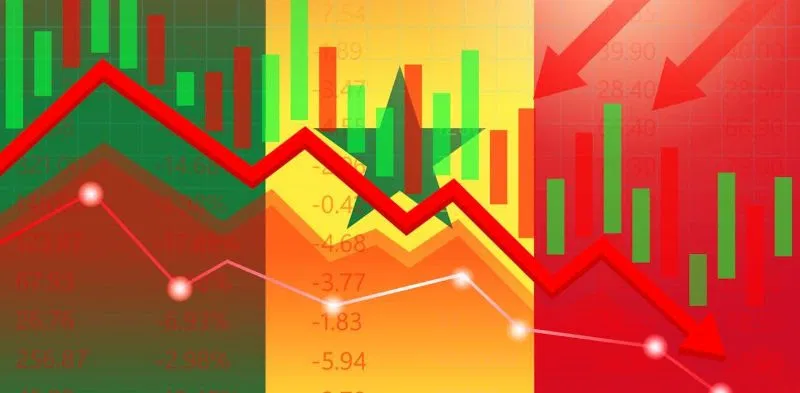Senegal Bond Demand Defies Downgrade
Senegal’s CFA450B issue draws 150% demand as the 2033 USD bond yields near 14% while local 10Y clears below 7%. With HG=F steady and ^TNX elevated, Dakar leans on CFA buyers to compress spreads and reduce FX risk over 12–18 months.

Senegal’s third local-currency bond of 2025, clearing CFA450 billion against a CFA300 billion target—an oversubscription above 150%—is more than a funding milestone. It signals that the West African Economic and Monetary Union’s domestic investor base is acting as the primary shock absorber while hard-currency windows remain constrained. The deal landed with the sovereign’s USD curve still in the low-to-mid teens and primary issuance sporadic, so Dakar’s pivot to CFA paper is a calculated attempt to re-anchor pricing in local fundamentals and pare exposure to offshore risk appetite.
The transmission mechanism is straightforward: substitute expensive FX debt with duration that domestic balance sheets can hold. Regional banks, pension funds and insurers—backed by sticky deposits and structural demand for long assets—absorbed four tranches across 3, 5, 7 and 10 years at coupons around 6.4%–6.95%. With WAEMU headline inflation running near the mid-3% range under the euro-peg’s nominal anchor, these coupons deliver positive real yields in local terms while eliminating currency mismatch. For the sovereign, the swap lowers FX refinancing risk, stabilises cash flows and broadens the investor base beyond episodic Eurobond participation.
Macro conditions explain both the strength of demand and its limits. Real GDP growth is projected above 7% in 2025 as gas from Greater Tortue Ahmeyim ramps and non-oil activity normalises. Public debt sits in the high-70s percent of GDP post-rebasing, and interest absorbs roughly a quarter of revenue—levels that require disciplined tenor management but do not imply imminent solvency stress if growth materialises. The binding constraint is external: a high share of hard-currency liabilities keeps the USD curve near 14% on the 2033 line, creating a wedge of more than 700 basis points over comparable CFA tenors that cleared below 7%. That spread is a precise price signal: the problem is offshore liquidity and term premium, not a domestic demand shortfall.
Market behaviour is consistent with that diagnosis. The oversubscription compresses the local term premium and should pull secondary yields 25–50 basis points lower as paper seasons, provided the auction calendar remains predictable. The banking channel, however, carries crowding-out risk. Sovereign holdings already dominate WAEMU bank books; an aggressive supply path could lift marginal funding costs and slow private-sector credit growth toward the 5% handle, particularly if monetary conditions stay firm. Policy needs to respond on three fronts: build curve liquidity through reopenings, lengthen the average maturity to smooth 2026–2027 peaks, and deepen repo to reduce the liquidity premium embedded in CFA paper. Those steps make room for corporate issuance when risk appetite returns.
Compared with prior frontier stress episodes, Senegal’s approach is a market-based reprice within the WAEMU rule set. Ghana reset its local curve through a coercive exchange, at significant near-term cost. Nigeria leaned on central-bank financing with inflation and FX side effects. Senegal is using price to clear supply, relying on the peg to anchor expectations and on regional pooling to recycle savings. The strategy will only succeed if fiscal and external feedback loops reinforce the pricing. On the fiscal side, a narrower primary deficit is required to prevent local yields drifting toward 8% as supply rises. Externally, reserve coverage needs to build toward 3.5–4.0 months of imports to narrow the hard-currency premium and reduce rollover risk. On market microstructure, predictable taps and functional collateral markets must raise turnover so that duration risk, not liquidity scarcity, sets the marginal price.
The structural signal is the rise of endogenous finance as a hedge against global shocks. As energy output scales, Senegal will be judged on whether new receipts stabilise the balance of payments and reduce dependence on volatile portfolio flows. If real growth holds above 7%, the non-oil primary deficit narrows, and domestic issuance remains disciplined, investors will treat the CFA market as a curve-building platform rather than a stop-gap. Conversely, slippage on consolidation, delays in gas ramp-up or opportunistic issuance would widen the local term premium and push banks toward liquidity hoarding, tightening domestic financial conditions.
The forward test is observable over the next 12–18 months. A constructive path features domestic yields compressing 50–75 basis points, foreign participation in CFA paper rising from low single digits toward 5%, and official reserves trending above 3.5 months of imports. In parallel, the USD curve should richen by 100–150 basis points if growth and reserves improve in tandem. If these indicators move decisively, October’s oversubscription will mark structural substitution—internal markets absorbing external shocks—rather than transient demand chasing headline coupons.





